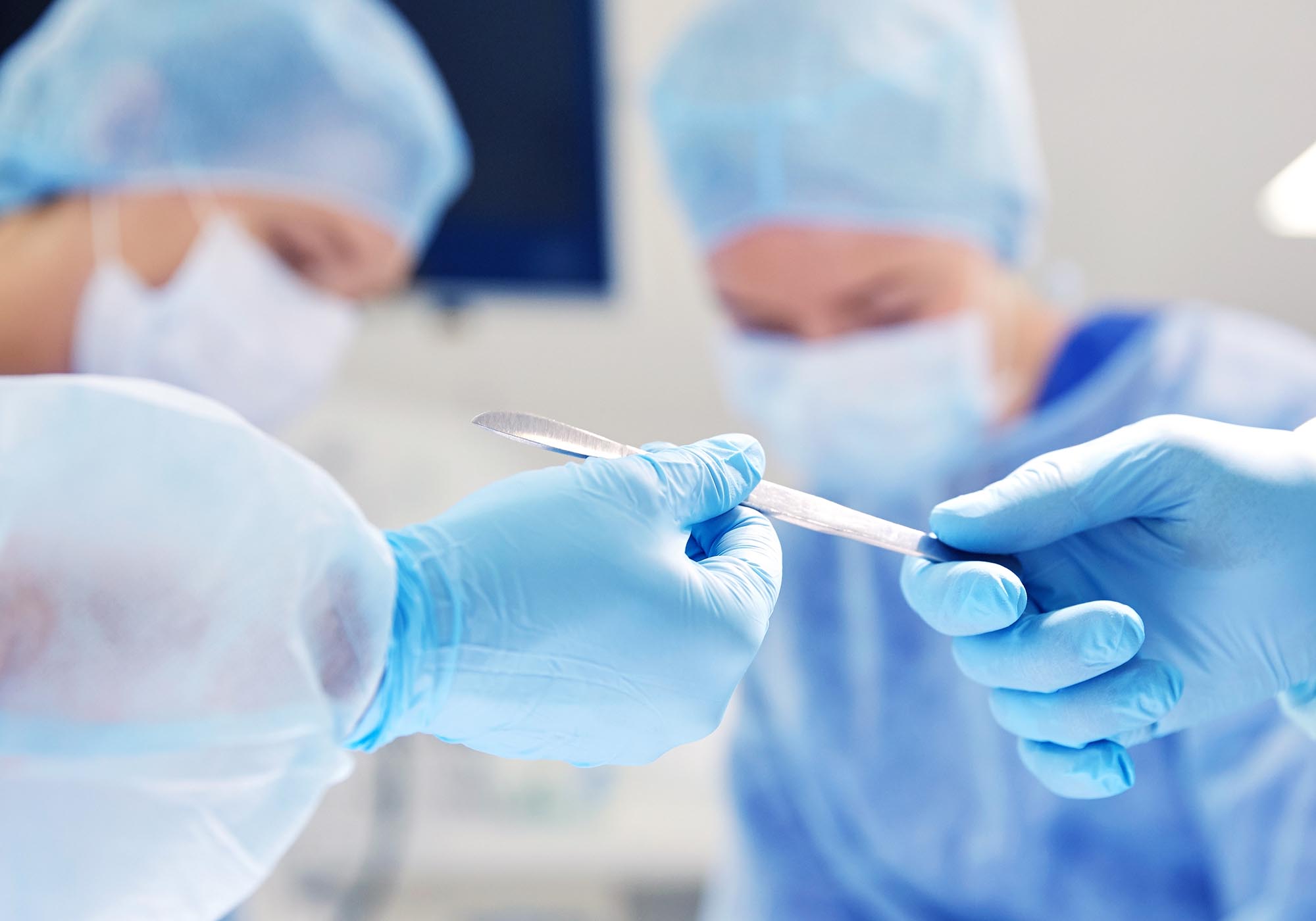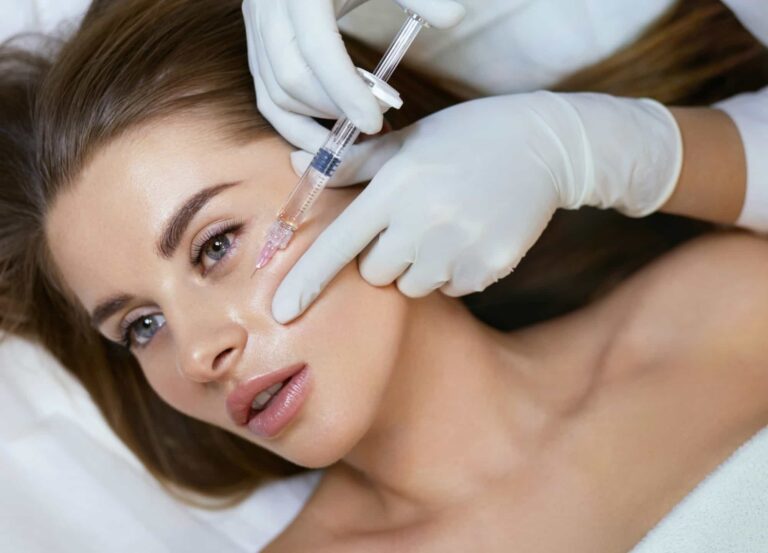In 2006, we set out to create a world where anyone can read honest reviews, see real before and after photos, and connect with qualified doctors. Now RealSelf is 15, and a lot has changed since we launched. This month, we’re looking back at industry trends that have shaped where we are—and where we’re going. Thank you for sharing your journey with us over the years. To celebrate our 15th anniversary, we’re giving away more than $25,000 in prizes. Click here to enter the sweepstakes.
Picture it: your plastic surgeon’s office, 2006. The U.S. Food and Drug Administration (FDA) announces an end to the 14-year moratorium on silicone breast implants, following decades of controversy and litigation surrounding the devices’ safety. The hyaluronic acid (HA) filler Juvéderm gets greenlit for the correction of wrinkles and folds, sparking a rivalry with the already approved Restylane and signaling the beginning of the end for collagen injectables. Botox, the lone neuromodulator on the market, continues to top the nonsurgical charts. And a new resurfacing laser called Fraxel, with its unprecedented approach and low-downtime claims, is accruing fans and skeptics in equal measure.
Amid this era of industry-rocking change, RealSelf launches, with the goal of connecting reputable doctors to potential patients and providing unfiltered reviews of countless providers and procedures. Now, after guiding millions through the rapidly evolving realm of cosmetic surgery for the past 15 years, we’re commemorating our anniversary by asking Verified doctors to reflect on the innovations that have punctuated our tenure while also looking to the future. Here, dermatologists and plastic surgeons share the 15 most pivotal moments in aesthetics since our inception—and offer a sneak peek into the plastic surgery pipeline.
15 pivotal moments from the past 15 years
1. Growth of fat grafting
“Over the past 15 years, fat grafting has been one of the most, if not the most, revolutionary procedures in all of plastic surgery. Prior to fat grafting, the fat we removed with liposuction got thrown into the medical-waste container. Plastic surgeons, smartly, realized that they could inject that fat back into the same patient, to further sculpt and enhance their bodies. Consequently, the rise of the Brazilian butt lift [BBL] has replaced the need for complication-prone butt implants, and breast fat grafting has revolutionized breast reconstruction and the fine-tuning of breast implant revision surgery. Fat grafting for the face and hands has given us a powerful tool to rejuvenate, both as a stand-alone procedure and in combination with traditional facelift surgery. The technology and techniques of fat grafting continue to advance.” —Dr. David Shafer, a board-certified plastic surgeon in New York City
2. Next-level radiofrequency devices
“One of the most exciting innovations in aesthetic medicine has been the use of radiofrequency [RF] energy for facial, body, and vaginal rejuvenation. RF treatments for skin tightening were first developed and approved in the early 2000s, with devices, like Thermage, that used monopolar RF to treat the superficial and upper epidermis. We now have handpieces and delivery systems that penetrate into deeper tissues, allowing for the epidermis, dermis, and subcutaneous tissue to be tightened.
“RF microneedling with Morpheus8 is an excellent option for patients who are seeking noticeable skin tightening but are not ready to go under the knife. For those looking to take it one step further, minimally invasive devices like FaceTite and BodyTite offer great results as stand-alone procedures while also enhancing what can be achieved with liposuction and skin-removal surgeries.
“Perhaps what I love most about the innovations in RF is its use for vaginal rejuvenation—we’re now able to help restore confidence, intimacy, and comfort in performing day-to-day activities. While none of these technologies can completely duplicate or replace surgery, they have truly transformed what can be achieved in or out of the operating room.” —Dr. Camille Cash, a board-certified plastic surgeon in Houston
3. The research revolution
“The biggest change in the past 15 years has been how patients seek out and research aesthetic providers. RealSelf initiated this change when it allowed patients to search, share, and explore aesthetics information. For years prior, patients went to their local plastic surgeon and most plastic surgeons provided a vast variety of procedures. RealSelf was the first platform that allowed patients to search for surgeons who specialized in specific procedures and allowed surgeons to showcase their talents to the world. Now patients travel all over the country to have a procedure performed by a specialist in their desired field.” —Dr. Johnny Franco, a board-certified plastic surgeon in Austin, Texas
“Instagram has forever changed plastic surgery. This platform has enabled more surgeons to share more insight into surgical procedures with more patients than anything in the past 15 years.” —Dr. William Bruno, a board-certified plastic surgeon in West Hollywood, California
“For me, no question, the widespread availability of social media has had a massive impact on plastic surgery. Patients can find us, find the procedures and results they want, and communicate with other patients and surgeons more easily. It has helped make cosmetic plastic surgery more accessible, more real, for everyone.” —Dr. Shahram Salemy, a board-certified plastic surgeon in Seattle
4. The advent of fractional technology
“One of the biggest game changers is fractionation in energy delivery. The first commercial fractional thermolysis device, the Fraxel SR, was introduced in 2004 but required pre-application of a messy blue goop. Over subsequent years, improvements in technology—including dropping the blue goo step—led to the development of the Fraxel Re:store. By treating a ‘fraction’ of the skin with microthermal heating zones and leaving ‘skip’ areas of normal [untreated] skin and appendages, patients healed faster and without the complications associated with unfractionated resurfacing. Fractionation also extended treatment safety for [Fitzpatrick] skin types I to VI. The technology has evolved to include other laser wavelengths and allow multiple fractionated laser wavelengths in a single device, like with the Fraxel Dual and the Halo laser. The technology has even spread to non-laser energy-based devices, like the Venus Viva MD [which delivers a fractionated form of radiofrequency]. Fractionation is now an integral part of the technology in our aesthetics armamentarium, [delivering everything] from the lightest ‘lunchtime’ rejuvenation to heavier-duty treatment of photodamage and scarring.” —Dr. Heidi Waldorf, a board-certified dermatologist in Nanuet, New York
5. Renuvion for skin tightening
“Renuvion exceeds what any laser could deliver up until now and has been able to improve outcomes in facial and body contouring procedures more than anything in the past 15 years.” —Dr. William Bruno, a board-certified plastic surgeon in West Hollywood, California
“From an internal perspective, J-Plasma technology [aka Renuvion] has also improved leaps and bounds. It tightens tissues from the inside out, and coupled with liposuction, is a fantastic way to improve skin laxity all the way down to the muscle layer.” —Dr. Kevin Sadati, a board-certified plastic surgeon in Newport Beach, California
6. Popularization of scarless rhinoplasty
“Endonasal, or ‘closed,’ rhinoplasty, has become more popular over the past 15 years. The procedure, which avoids the visible external scar across the columella [tissue separating the nostrils], is less invasive and patients [tend to] heal faster. Plus no painful packing is required. All the common maneuvers performed inside the nose—such as tip cartilage suturing, dorsal hump reduction, cartilage removal, advanced cartilage grafting techniques, osteotomies, and lifting the droopy tip—can be accomplished with a closed approach.” —Dr. William Portuese, a board-certified facial plastic surgeon in Seattle
7. Advancements in dermal fillers
“The number of fillers available in the United States has grown exponentially—as has our understanding of the anatomy. In the early 2000s, we used the first hyaluronic acid [HA] fillers to ‘fill’ lines. We now have a range of advanced HA and non-HA fillers and biostimulators designed for stiffness and lift, softness and spread, moldability and plasticity, elasticity with dynamic movement, invisibility and opacity—plus better tools for injection, like superior cannulas and needles. Guided by the abundance of recent papers using scientific methods to measure the effects of filler placement vis-à-vis facial ligaments, depth of placement, and advanced product characteristics, we can now provide enhanced safety and aesthetic results.” —Dr. Heidi Waldorf, a board-certified dermatologist in Nanuet, New York
8. Diversification of injectables
“The entire injectables category has come a long way. These are basically instant or quick-acting [materials that] solicit changes [in the skin] to support our appearance and the way we age. Botox alone is a miracle molecule with many uses, from treating frown lines to excessive sweating to contouring the face to reducing pore size. Injectable fillers and neuromodulators can help improve appearance, fill volume, build elasticity, fight deflation, and prevent muscle movement or movement of fat [in order] to smooth and compensate for losses in both our structural scaffolding and bone and muscle. They can even help to rejuvenate and rev up our body’s natural metabolic functions, to produce collagen and elastin, which decrease as we age. Kybella and Qwo, two newer injectables, have made the category more comprehensive, addressing the greatest number of related issues for stubborn deposits of adipose tissue and for cellulite.” —Dr. Ava T. Shamban, a board-certified dermatologist in Beverly Hills, California
9. Destigmatization of labiaplasty
“Over the past 10 years, labiaplasty has become an accepted procedure for women who are experiencing functional problems related to labia minora that hang outside the labia majora. Normal clothing, like panties, workout wear, and fitted pants, can cause rashes, swelling, and pain along the protruding labia minora. Thanks to the internet and consumer educational sites, like Realself, patients now have access to educational materials that help them understand that there is a safe solution to their problem.
“Although pre-childbirth labiaplasty has been somewhat controversial, it’s important to remember that this is often not [strictly] a cosmetic procedure. A study in the Journal of Sexual Medicine found that “the majority of patients undergoing reduction of the labia minora do so for functional reasons, with minimal outside influences affecting their decision for treatment.” This means that young women who choose labiaplasty as a corrective measure are doing so not because of the common misperception that they are influenced by pop culture or exposure to pornography, but because they have difficulties with the activities of daily living. I have more than 20 years of experience performing labiaplasty to improve the form and function of the labia minora—this procedure has given many young women a better quality of life.” —Dr. Laurie A. Casas, a board-certified plastic surgeon in Glenview, Illinois
10. Birth of CoolSculpting
“One of the most innovative and groundbreaking ideas within the past 15 years has to be the ability to sculpt the body with cold. Using cryolipolysis [aka CoolSculpting] to reduce fat and create new body contouring has revolutionized aesthetics.” —Dr. Grant Stevens, a board-certified plastic surgeon in Marina del Rey, California
11. The Keller funnel, for breast augmentation
“If you ask me what new innovations have impacted my practice the most in the past 15 years, the Keller funnel has to be at the top of the list. I remember several years ago, when I was approached about trying the funnel, I was really skeptical. After all, I had been putting in silicone implants for years—I knew what I was doing and felt I was incredibly skilled in pushing that gel implant through a small incision and getting it in place in 10 to 15 seconds. But then I tried the funnel, and holy hell, it was a game changer! I used the funnel, and the implant went right in—minimal force on the implant and no contact with the skin. With the funnel, there was no pulling in microscopic debris from the incision edge into the pocket, let alone worry about the bacterial contamination. The incision edge looked pristine! I was blown away that something so simple could work so beautifully. There are studies that support a lower capsular contracture rate with use of the funnel as well as lower pocket contamination. It has gotten to the point that if a funnel isn’t available, I feel like I am doing the wrong thing for the patient as well as the implant. The Keller funnel makes implant insertion more elegant and precise. While I could live without it in my practice, I definitely don’t want to.” —Dr. Melinda Haws, a board-certified plastic surgeon in Nashville, Tennessee
12. Proliferation of nonsurgical devices
”The rise of nonsurgical and minimally invasive technology that allows face and body improvement with little to no downtime has been a game changer. Fifteen years ago, we had aggressive lasers and some other devices that did not work well. Since then, we have seen the rise of fractional technology, skin tightening with microneedle RF and ultrasound, internal tightening with lasers, plasma technologies, and among my favorites, the Sciton Hero—in-motion broadband light that allows body and face rejuvenation with no downtime and fewer, safer, much faster treatments—and newer facial lasers and devices, like the Sciton Moxi, which improve pigment and texture with minimal downtime. The future will be microcoring, with new devices from Cytrellis and other companies.” —Dr. Jason Pozner, a board-certified plastic surgeon in Boca Raton, Florida
13. A nonsurgical fix for dark circles
“As an oculofacial plastic surgeon, I am confronted daily with questions about the best way to treat dark circles—one of the first areas to demonstrate signs of aging. It is a complex problem having to do with age-related volume loss in the tear trough region, skin hyperpigmentation, and vascular anatomy. Filler injections to the tear trough have greatly changed the landscape of dark circles management. No longer are we dependent on lower eyelid surgery alone to correct hollowing in the under-eye area. Tear trough filler injections can be performed safely in the clinic, to immediately brighten the under-eye region and give the illusion of a full night’s sleep.” —Dr. Tanya Khan, a board-certified oculoplastic surgeon in Austin, Texas
14. Facelifts under local anesthesia
“One of the pivotal moments in plastic surgery is the development of local anesthesia techniques that allow for performing complex cosmetic plastic surgery procedures, such as facelift and neck lift, under local anesthesia. Even though general anesthesia and IV sedation are relatively safe anesthesia modalities, they carry risks that make people hesitant to undergo cosmetic plastic surgery of the face and neck. Additionally, there is a misconception that avoiding pain entirely during surgery requires going to sleep. Nowadays, I routinely perform both deep plane and SMAS lifts under local anesthesia, with the patient wide awake and without pain during the procedure, which appeals to patients who want to eliminate all the risks associated with general and twilight anesthesia and to those with contraindications for general anesthesia.” —Dr. John Mesa, a board-certified plastic surgeon in New York City
15. Better breast reconstruction
“Some of the greatest innovation in plastic surgery has been in breast reconstruction. Prior to 2006, all patients received big incisions, nipples were always removed, only tissue expanders were used, the pectoral muscle was cut, and our crappy silicone gel implants rippled right through the skin. I remember, in the mid-2000s, the first time I placed an implant at the time of mastectomy instead of using a tissue expander—the whole hospital freaked out. Now it’s de rigueur for me and my colleagues to perform nipple-sparing mastectomy, place the implant through a small incision at the inframammary crease, and use a direct-to-implant technique. It looks better, saves the patient additional surgery, is less painful, and is better in every way. We are even performing nerve reconstruction, to allow for nipple sensation after mastectomy. The cohesive gel implants we use now last for decades and show few or no ripples. Second-stage surgery is even better, with fat grafting creating fabulous, more natural breasts. I can’t tell you how many times my patients tell me that their oncologist accidentally orders a mammogram, forgetting that they had a mastectomy, because their breasts look so real. Fifteen years has done a lot!” —Dr. Lisa Cassileth, a board-certified plastic surgeon in Beverly Hills, California
Forecasting the next 15 years
1. A regenerative medicine boom
“I see some exciting advances happening in the field of aesthetics, centering around regenerative medicine—using the body’s own stem cells and healing abilities for aesthetic purposes. This concept centers around things like biostimulation, with fillers that increase the body’s own ability to generate collagen and even elastin, in some cases. There are companies already working diligently to create these exciting new products. I see this translating to new injectables that naturally generate volume in tissues, products that can help improve healing times and subsequent surgical outcomes, and skin-care regimens derived from regenerative tissue that can help the skin and soft tissues look better.” —Dr. Jason D. Bloom, a board-certified facial plastic surgeon in Bryn Mawr, Pennsylvania
2. Better Botox
“Botox injections continue to be the most popular [nonsurgical] cosmetic procedure. While Botox has been around for more than 25 years, there’s ongoing research to develop a topical neurotoxin with longer-lasting effects than Botox. In addition to topical Botox, a different form of neurotoxin called daxibotulinumtoxinA, which should last six months as opposed to three or four, is in development.” —Dr. Michele S. Green, a board-certified dermatologist in New York City
3. Undetectable eye-area tweaks
“In my opinion, trends in the next 15 years will be moving toward an even more natural-looking surgical result—meaning that surgical techniques will continue to evolve, allowing us to restore a patient’s original youthfulness, with no signs of surgery having been done. We’ll keep patients looking just like themselves while truly turning back the hands of time. I also hope that new fillers will be developed that will give more consistent results for under-eye hollows. The ones that are currently available today are good but can cause fluid retention, which limits who we can use them on.” —Dr. Jessica Lattman, a board-certified oculoplastic surgeon in New York City
4. The fall of liquid rhinoplasty
“Nonsurgical rhinoplasty became very popular several years ago, mostly due to Instagram—but many patients are now realizing that a well-executed surgical rhinoplasty provides a far superior result, and can avoid the dreaded and all too common ‘avatar’ look of nonsurgical rhinoplasty. Unfortunately, most injectors will offer a nonsurgical rhinoplasty to almost any patient who walks in the door—even if they’re not a good candidate. A good provider will say no [to liquid rhinoplasty] and instead offer a surgical rhinoplasty or refer to a good rhinoplasty surgeon who can do the surgery.” —Dr. Richard G. Reish, a board-certified plastic surgeon in New York City
5. Natural facial restoration
“Innovations will probably focus more on restoration instead of augmentation for both surgical and nonsurgical treatments, as people are starting to recognize the benefits of thinking about the fundamentals of aging. We’ve had many years of looking at aggressive treatments, and I see the trend heading towards restoring tissue in line with the natural aging process instead of overcorrecting. With injectables, too, there’s a progressive emphasis on stepwise treatment—the patient and the provider being okay with a slight undercorrection. I foresee a greater focus on collagen stimulation to provide volume with less tissue distortion and injury. The pendulum always swings pretty far when there is a fad, such as the fox eye or very large lips, but now we’ve seen some of the negative consequences of that pendulum swing and I think we are becoming more aware of just how sensitive the human eye is to something that appears unnatural.” —Dr. David M. Lieberman, a board-certified facial plastic surgeon in Palo Alto, California











